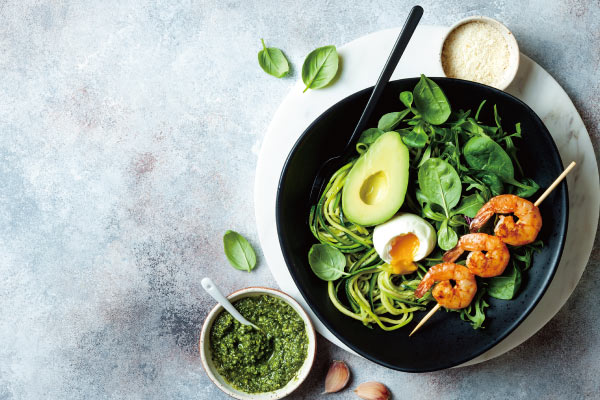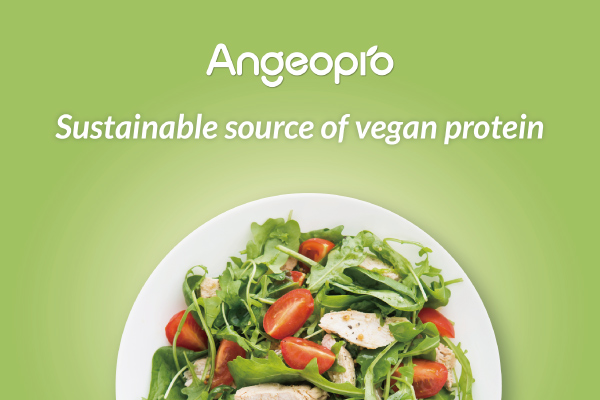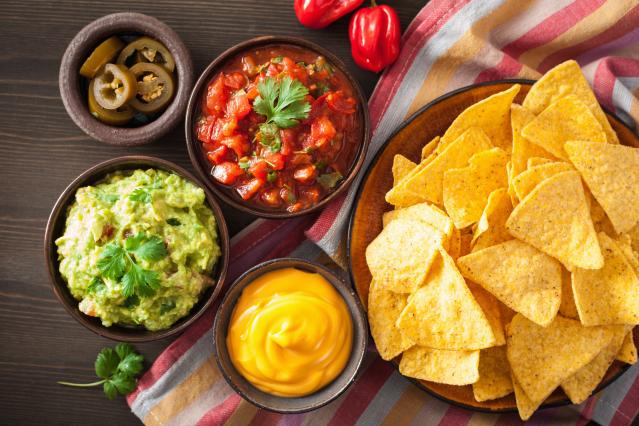By Missy Green
Ingredients that can enhance taste and contribute to cleaner labels are on-trend, as consumers pay more attention to the health and naturalness of their food.
FoodIngredientsFirst speaks with taste and texture specialists Hydrosol, Kerry, Angel Yeast, Griffith Foods and Givaudan on taste optimization techniques for healthier savory foods.

Stand-out ingredients include plant-based fibers, yeast extracts and reduced stocks to replace the loss in mouthfeel and taste in reformulated F&B.
Finding texture synergy
Texture is an essential component of taste, puts forth Katharina Schäfer, product manager Hydrosol, and must be considered during taste development.
“As soon as the texture of a product deviates from the usual texture, it is often stated that a product ‘does not taste good.’”
Texture and color must be considered when optimizing taste.For example, if an ice cream is interspersed with ice crystals, the enjoyment value is reduced enormously while french fries must have a crispy texture to be appealing, she continues.
Foods’ texture will also help determine how it carries flavor and how long it lingers in the mouth, other critical aspects of the taste experience.
“A fatty cream sauce coats the mouth and delivers a velvety longer-lasting taste experience; a light broth delivers a clean upfront taste experience,” says David Hamilton, creative insight officer at Kerry.
The fat content has to be considered as well as crispness, as texture can also determine what flavoring use levels are needed.
Hamilton notes that the palate can handle much more vinegar on a french fry than a potato chip due to fat and soft potato texture.
Taste is king, but not the only consideration
Healthfulness is increasingly relevant as on-pack labeling schemes like the Nutri-Score expand across Europe.
Schäfer observes that removing ingredients like sugar and fat pose technological challenges as they can give texture, mouthfeel and help carry flavors.
Griffith Foods envisions processors will take more advantage of seasonings, coatings and sauces to deliver delicious alternative proteins.In their place, hydrocolloids and starches can be used to give the product the necessary stability, a full body and a pleasant texture, she explains. Special plant fibers, on the other hand, improve the mouthfeel.
She underscores that a great benefit of using plant fiber is that – depending on the dosage used – high dietary fiber content can be advertised on the product.
Leveraging plant-based fibers in healthier products, Hydrosol recently unveiled a comprehensive line of clean label products for children that reduced or eliminated E-numbers. For example, the range includes a high-fiber, fat-reduced french fry sauce.
Reducing salt with fermented ingredients
In addition to the impetus to reduce sugar and fat, brands are searching for ways to drive savory umami tastes with less salt.
This need is primarily driven by health authorities sounding the alarm on the dangers of too much salt.
A report last month found that the US Food and Drug Administration’s delay in salt reduction targets may have resulted in hundreds of thousands of deaths that could have been prevented.
The World Health Organization has also put its foot on the accelerator in reducing salt worldwide, coming up with benchmarks for salt limits across 60 F&B categories last year.
“Fermentation is a huge key to enhancing taste in low salt applications, particularly through yeast extracts,” says Hamilton.
“Other ingredients in fermentation such as miso, shio kojis and soy can deliver depth of taste but also particular tonality, but yeast extracts deliver less tonality and more enhancement of the overall dish.”
Yeast extracts can improve both protein and vitamin content as well as taste in plant-based F&B. Angel Yeast’s general manager of protein nutrition and flavoring technical center Li Pei chimes in: “Yeast extracts are some of the commonly used umami ingredients. They are derived from yeast, rich in free amino acids, nucleotides, polypeptides and other taste-giving ingredients, which can boost umami taste and kokumi mouthfeel.”
Pei describes yeast extracts as “formulators’ best companions to making foods more delicious and richer.”
They are widely used in applications such as bouillon, snacks, instant noodles, beverages, plant-based meals and sauces, he highlights.
Fermented plant-based ingredients
In addition to their taste benefits, yeast extracts can also help improve the nutritional quality of plant-based foods, underscores Eric Ao, general manager of Angel Yeast’s Europe Division, a win-win in reformulation.
“Angel’s newly launched yeast protein AngeoPro is a sustainable source of protein that contributes to nutrition in plant-based meats through its high protein and vitamins content and its ability to mask off-notes.”
Fermentation can also help plant-based analogs achieve a more realistic taste, explains Chef Berten Bos, culinary technologist and development chef at Griffith Foods Europe. “Traditional fermentation can bring the typical depth and sharpness to plant-based cheeses, meats and seafood.
He adds: “The continuing rise of plant-based fermentation-derived egg ingredients will help to bring cleaner and leaner declarations. Further down the line, biomass fermentation will provide a whole new array of food-grade protein to be transformed into new delicious and nutritious products.”
Hamilton also observes that stocks are picking up steam with core reductions used to give natural depth.
“Stocks are the foundation of taste in every kitchen; reduced stocks as an ingredient will help increase taste in a natural and culinary way.”
Stocks are a core kitchen component to naturally add depth to products.The whole plant picture
Givaudan’s Flavio Garofalo, global category director for savoury, adds that brands must take a holistic approach when formulating plant-based products.
This includes not only addressing taste and healthfulness but by finding coloring solutions that create authentic visuals, which also contribute to the eating experience.
Matthias Bourdeau, protein market segment manager, Griffith Foods Europe, anticipates that processors will take advantage of the power of seasonings, coatings, and sauces to elevate the alternative protein plate and make it even more flavorful.
Moreover, combinations of different types of alternative textured proteins will bring a more appealing bite and mouthfeel, coming closer to authentic flavors like pork tenderloin or sushi-style tuna, he envisions.

Natural not going away
The concept of clean label, products that use as few and as natural ingredients as possible with minimal processing, has proven to be more than a passing fad.
A study by Kerry in 2021 found that 67% of European consumers have been more attentive to natural ingredient claims. Meanwhile, 71% of European consumers are concerned with food and ingredient sourcing.
Responding to this trend for natural ingredients, Angel Yeast’s subsidiary Angel Yeast Egypt received Non-GMO Project verification for 22 yeast extract and inactive dried yeast products earlier this year.
The company’s yeast flakes were also recently certified by Ecocert, the EU organic certification agency, following an audit at its Yichang factory in China.
Looking ahead to the future of optimizing taste, Pei concludes that solutions that are healthier, more natural and more environmentally sustainable ingredients will come out on top.
Source: Foodingredients1st
This exclusive interview was published in Foodingredients1st.
Link to the following landing page: https://www.foodingredientsfirst.com/news/wholly-better-naturally-optimizing-taste-in-better-for-you-savory-foods.html







